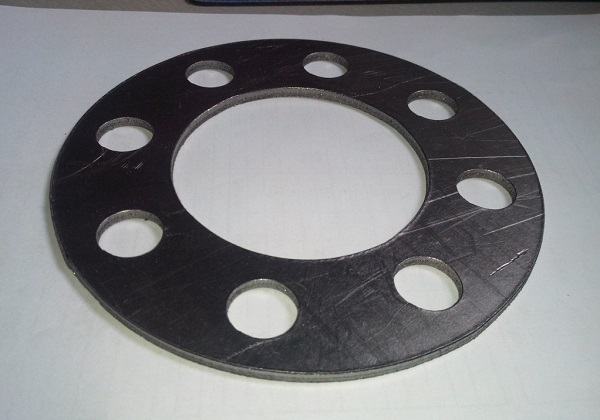Gasket
A gasket can be used for many different purposes, but generally, it serves as a flexible seal that fills the space between two components joined under compression, preventing leakage through the gap between it. For example, when laying a pipeline, a gasket is used to create a seal between adjoining pieces of pipe, preventing liquids or gases leaking out from the pipeline, or from penetrating into the pipeline.
Gaskets can also be used for, or contribute to:
- Sound and noise reduction.
- Vibration reduction.
- Packaging seals.
- Hygiene control.
- Supports and mountings.
- Glazing and cladding.
The durability and safe operation of a gasket can be significantly enhanced by selecting the right material, taking into account the application and the environmental features it will be exposed to. Many different materials can be used to make gaskets. The key property is generally that they are capable of yielding to such a degree that they can tightly fill the required space. Flexible materials such as rubber, paper or cork are often used. Metal can also be used, to make spiral wound or copper head gaskets.
The material used, and its characteristics, will determine the properties of the gasket, which might include; resistance to chemicals, resistance to extreme temperatures, resistance to pressure, and so on.
In pressurised systems, a gasket may also act as a safety device. The gasket is typically the weakest component of the system and will fail before a more potentially dangerous or costly response such as a pipe bursting or an explosion.
A gasket should allow the sealing surfaces to be separated and reassembled, allowing for essential maintenance to take place.
[edit] Find out more
[edit] Related articles on Designing Buildings Wiki
Featured articles and news
The UK's Modern Industrial Strategy: A 10 year plan
Previous consultation criticism, current key elements and general support with some persisting reservations.
Building Safety Regulator reforms
New roles, new staff and a new fast track service pave the way for a single construction regulator.
Architectural Technologist CPDs and Communications
CIAT CPD… and how you can do it!
Cooling centres and cool spaces
Managing extreme heat in cities by directing the public to places for heat stress relief and water sources.
Winter gardens: A brief history and warm variations
Extending the season with glass in different forms and terms.
Restoring Great Yarmouth's Winter Gardens
Transforming one of the least sustainable constructions imaginable.
Construction Skills Mission Board launch sector drive
Newly formed government and industry collaboration set strategy for recruiting an additional 100,000 construction workers a year.
New Architects Code comes into effect in September 2025
ARB Architects Code of Conduct and Practice available with ongoing consultation regarding guidance.
Welsh Skills Body (Medr) launches ambitious plan
The new skills body brings together funding and regulation of tertiary education and research for the devolved nation.
Paul Gandy FCIOB announced as next CIOB President
Former Tilbury Douglas CEO takes helm.
UK Infrastructure: A 10 Year Strategy. In brief with reactions
With the National Infrastructure and Service Transformation Authority (NISTA).
Ebenezer Howard: inventor of the garden city. Book review.
The Grenfell Tower fire, eight years on
A time to pause and reflect as Dubai tower block fire reported just before anniversary.
Airtightness Topic Guide BSRIA TG 27/2025
Explaining the basics of airtightness, what it is, why it's important, when it's required and how it's carried out.
Construction contract awards hit lowest point of 2025
Plummeting for second consecutive month, intensifying concerns for housing and infrastructure goals.
Understanding Mental Health in the Built Environment 2025
Examining the state of mental health in construction, shedding light on levels of stress, anxiety and depression.






















